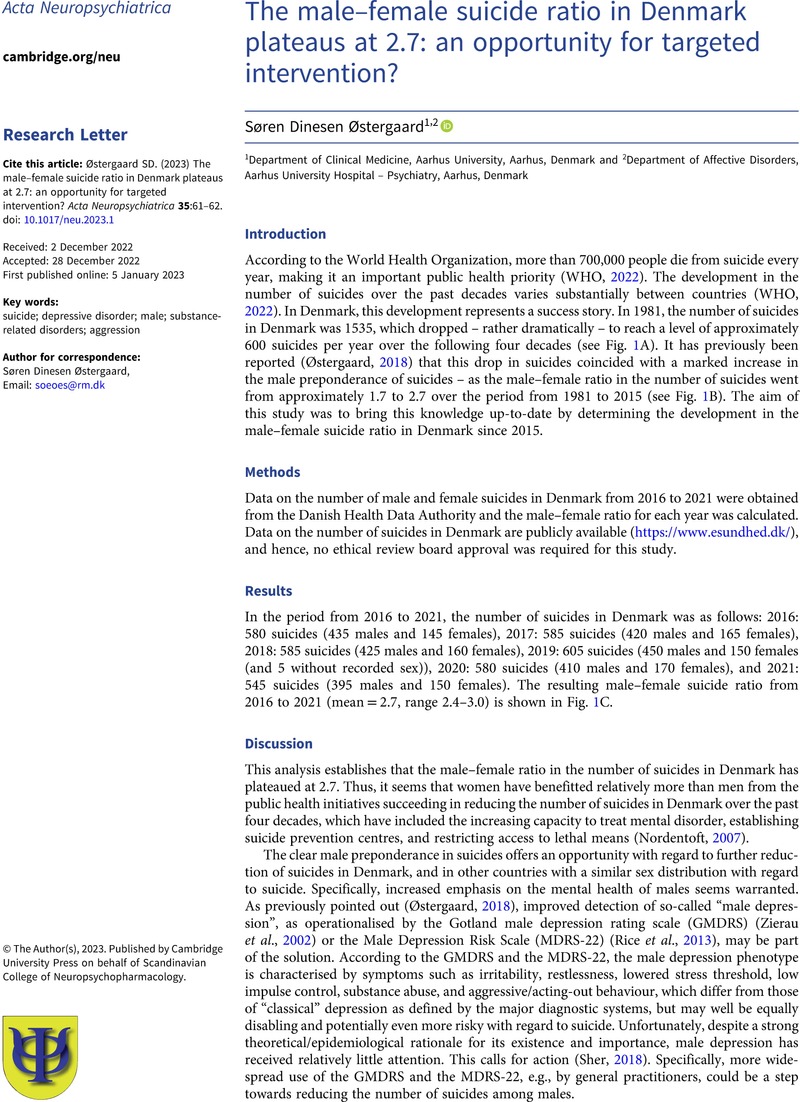Crossref Citations
This article has been cited by the following publications. This list is generated based on data provided by Crossref.
Østergaard, Søren Dinesen
Momen, Natalie C.
Heide-Jørgensen, Uffe
and
Plana-Ripoll, Oleguer
2024.
Risk of Suicide Across Medical Conditions and the Role of Prior Mental Disorder.
JAMA Psychiatry,
Vol. 81,
Issue. 12,
p.
1198.
Reilev, Mette
Andersen, Jacob Harbo
Højlund, Mikkel
Stenager, Elsebeth
Rasmussen, Lotte
and
Christiansen, Erik
2025.
Initiation and Discontinuation of Psychotropic Drugs Relative to Suicidal Behavior: A Danish Registry‐Based Study.
Acta Psychiatrica Scandinavica,
Vol. 151,
Issue. 6,
p.
698.




